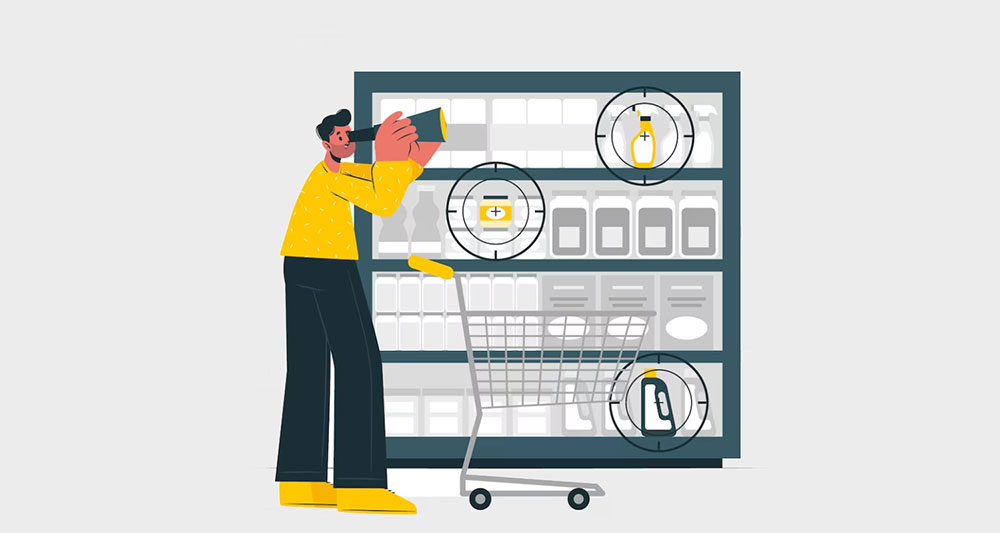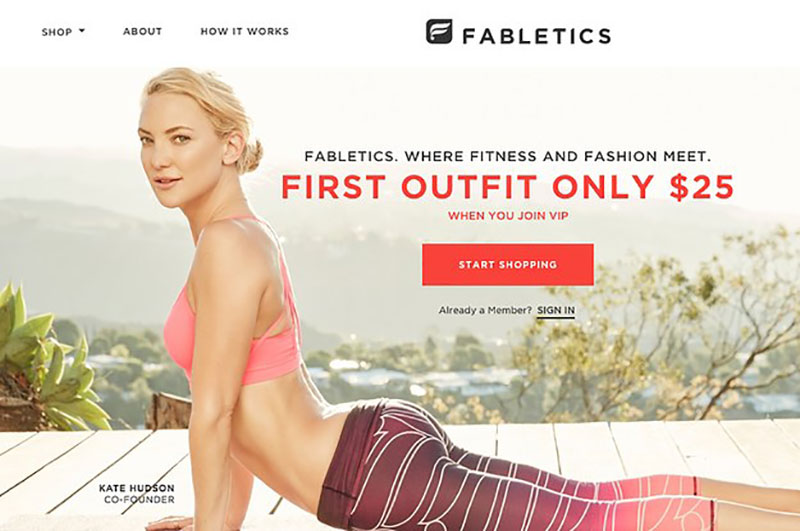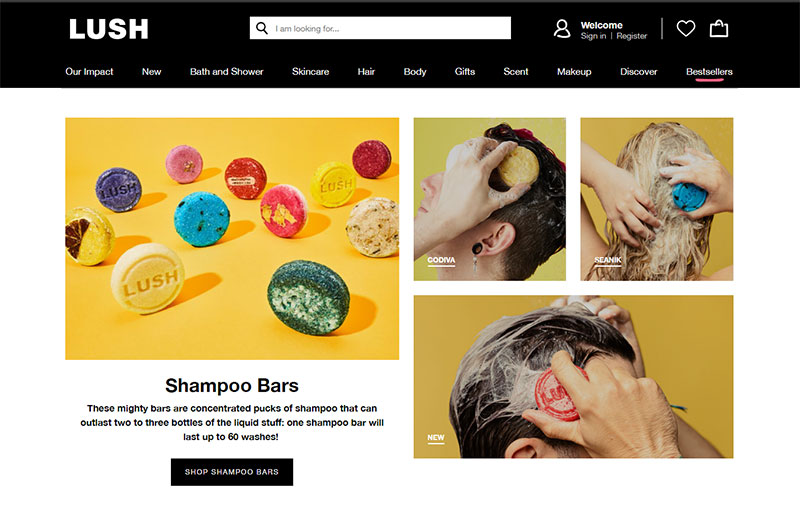The Power of Product Differentiation: A Comprehensive Guide

Imagine a sea of sameness—rows upon rows of indistinguishable products, each clamoring for attention yet fading into a dull blur of choices. Now, envision that one item that pops, capturing your eye with its allure, whispering a tale of uniqueness.
This isn’t just happenstance; it’s the art of product differentiation at play, a strategy critical in today’s fast-paced markets, dominated by both consumer choice and cutthroat competition.
Stepping into the vibrant arena of the market, one question looms large: how does a product stand out? As a seasoned web designer, I’ve noticed a pattern. Those who master competitive advantage and brand identity reign supreme.
Within this article, we unravel the enigma of how distinctive features and a solid unique value proposition elevate a brand’s narrative.
You’ll discover the secrets of innovation, peep into the smart tactics of market positioning, and learn about the consumer targeting strategies that ensure a product is not just seen, but remembered.
Dip into the expert insights on carving a niche in the sprawling e-commerce landscape, ensuring your unique offerings don’t just float; they make waves.
Key takeaways
- Essence of Product Differentiation: It involves identifying and highlighting the unique qualities of a product to make it stand out from competitors, affecting consumer purchase decisions by offering them clear reasons to choose one product over another.
- Price vs. Non-Price Differentiation: Price differentiation focuses on varying price points to signal differences in quality or exclusivity, while non-price differentiation emphasizes product features, customer service, brand image, and environmental impact, showcasing value beyond cost.
- Vertical and Horizontal Differentiation: Vertical differentiation categorizes products based on quality, whereas horizontal differentiation involves differences that are not quality-based but cater to varied preferences, like different flavors of ice cream.
- Implementation Strategy: Understanding customer values is crucial for product differentiation. It requires creative and innovative approaches to distinguish a product’s features, aligning them with the target audience’s needs and effectively communicating these differences.
Understanding Product Differentiation

The Concept
Let’s dive a little deeper into product differentiation. Imagine two shops selling coffee right next to each other. How does one stand out from the other? Well, they could offer a special blend of coffee, or maybe they provide exceptional service, or perhaps they have a cozy ambiance that the other shop lacks.
This difference, this uniqueness, this edge is product differentiation. It’s about identifying and communicating the distinctive qualities that make your product special.
The Role of Product Differentiation in Consumer’s Purchase Decision-Making Process
Remember the coffee shops? Imagine you’re a customer trying to decide where to get your morning caffeine fix. You’d probably consider the unique features each shop offers before making a choice. That’s how customers operate. They don’t just randomly choose a product.
Product differentiation influences the consumer’s purchase decision-making process. It’s a way of saying, “Here’s why you should choose our product and not the competition.”
The Economic Importance
In an economic sense, product differentiation can create a significant competitive advantage. It can allow a business to charge a premium for its products, increase its market share, and enhance its profitability.
In a nutshell, it can have a powerful economic impact on a business. It is not just about standing out from the crowd, but also about enhancing the bottom line.
Types of Product Differentiation

Price Differentiation
Price differentiation is when a company differentiates its product based on price. One product might be more expensive because it’s made with superior materials, or maybe it’s handcrafted instead of mass-produced.
Remember though, a higher price doesn’t always mean better. It’s about providing value for the money and making sure customers understand why your product is worth the price.
Non-price Differentiation
On the flip side, non-price differentiation is when a company differentiates its products based on factors other than price. This could be anything from the product’s features, the customer service, the brand image, or even the product’s environmental impact.
In short, it’s about showing customers that there’s more to your product than just the price tag.
Vertical Differentiation
Definition and Explanation
Vertical differentiation is when products differ in quality. Think of it as a vertical line where products at the top are high-quality, and those at the bottom are low-quality.
Examples
Let’s say you’re shopping for a new smartphone. You have the option to buy a high-end model with all the latest features or a basic model that just covers the essentials. This difference in quality is an example of vertical differentiation.
Horizontal Differentiation
Definition and Explanation
Horizontal differentiation, on the other hand, is when products are different but not necessarily better or worse. Think of it as a horizontal line where products are spread out side by side.
Examples
Take ice cream flavors for instance. Vanilla, chocolate, and strawberry are all different flavors, but is one really better than the other? That’s subjective and depends on individual preferences. This is an example of horizontal differentiation.
Implementing Product Differentiation
To implement product differentiation, you first need to understand your customers and what they value. Then, identify how your product can meet these values differently from your competitors. Finally, communicate these differences effectively to your customers.
When implementing product differentiation, consider your product’s unique features, your target audience, your competition, and your brand’s overall message. Remember, it’s about making your product stand out in a meaningful way.
Creativity and innovation play a crucial role in product differentiation. It’s about thinking outside the box and finding unique ways to make your product stand out. Whether it’s through innovative design, creative marketing, or a revolutionary new feature, creativity and innovation are the driving forces behind effective product differentiation.
Advantages and Disadvantages
The power of product differentiation extends beyond just making your product stand out. It can lead to a host of economic benefits too. This might mean a higher profit margin due to a premium price or increased market share as more customers are attracted to your unique product offering.
Role in Achieving a Higher Price Point
Product differentiation can help justify a higher price point. If customers perceive your product as unique or superior in some way, they’re likely to be willing to pay a premium for it. Remember, it’s not about being expensive, but about delivering more value.
Promotion of Brand Loyalty
There’s a lot more to product differentiation than just attracting new customers. It can also foster brand loyalty. When customers identify and appreciate what makes your product unique, they’re likely to stick around and even spread the word. That’s powerful.
Potential Challenges and Risks
Of course, product differentiation isn’t without its challenges. It requires a deep understanding of your customers and constant innovation. Plus, there’s always a risk that competitors might copy or even outdo your unique features. But with great risk comes great reward, right?
Case Studies of Successful Product Differentiation
Airstream

Airstream, a brand of travel trailers, is a great example of successful product differentiation. With their iconic silver-bullet trailers, Airstream has carved a niche for itself in the travel and leisure industry. Their product is not just a trailer; it’s a lifestyle statement.
Billie

Billie, a women’s personal care brand, has differentiated itself by addressing the ‘pink tax’. They offer premium razors and other personal care products for women without the inflated price tag usually associated with women’s products. This has helped them resonate with their target audience and stand out in the market.
Fabletics

Fabletics, a fitness apparel brand, uses a subscription model to differentiate itself. Customers take a quiz about their workout and style preferences and then receive personalized outfit suggestions each month. This unique approach has helped Fabletics grow rapidly in the competitive fitness apparel market.
Nike

Nike has successfully differentiated its products through innovative design, powerful branding, and a clear emphasis on performance. The “Just Do It” slogan and the swoosh logo are instantly recognizable worldwide, demonstrating the power of product differentiation in building a strong brand.
Lush

Lush Cosmetics has differentiated itself through its commitment to fresh, handmade, and cruelty-free products. This has helped them build a loyal customer base who aligns with their ethical practices.
Blackberry in the 2000s

Blackberry was a standout player in the early 2000s due to its product differentiation. The physical QWERTY keyboard and secure email service made it a favorite among professionals, demonstrating how unique features can drive a product’s success.
FAQ On Product Differentiation
What exactly is product differentiation?
Product differentiation? It’s like giving your product a personality that stands out in a crowd. This strategy makes your item the rock star in a concert full of cover bands. It’s about highlighting those special quirks – could be design, features, or the customer service charm – that make your product the fan favorite.
Can product differentiation influence customer loyalty?
Absolutely. Think about your favorite coffee shop. It ain’t just about the beans, right? It’s the vibe, the funky mug, or that barista who remembers your dog’s name. Differentiation can create an emotional pull, a connection. Nail that, and customers stick around like family.
How does brand identity tie into product differentiation?
Imagine your brand is a person – let’s call them Alex. Alex’s identity, from the clothes they wear to the way they talk, is your brand identity. It goes hand in hand with differentiation. You want folks to spot Alex in any crowd, instantly.
What’s the role of innovation in product differentiation?
Innovation’s like that secret sauce; it keeps things zesty. Injecting fresh, game-changing ideas into your products keeps people curious and hungry for what you’re cookin’ up. It can be a smart tweak or a big Eureka moment, but it’s gotta wow ’em to keep ’em.
Can pricing strategy be a form of product differentiation?
Sure can. It’s like you’re at an auction where every bid counts. Go too high, and you might scare ’em off. Too low, and you’re leaving money on the table. The trick is to price your masterpiece just right, making it clear why it’s worth every penny.
How important is customer experience in product differentiation?
Customer experience is king. It’s the journey, not just the shiny object you’re selling. Get this right, and it’s like you’re handing out VIP backstage passes. People won’t just buy your product; they’ll rave about the whole shebang, from the drumroll to the final bow.
What is the unique selling proposition (USP), and how’s it related to product differentiation?
Your USP is your product’s slam dunk, the crowd jumper. It’s that one-liner that makes everyone say, “I need this in my life, like, now.” It’s directly related to differentiation because it answers the big question: “Why pick this one over all the others?”
How does product differentiation affect competitive advantage?
It’s all about staying ahead in the game. When you’ve got something no one else has, it’s like you’re playing chess and everyone else is stuck playing checkers. It’s your move that has ’em all watching, thinking, “Now, why didn’t I do that?”
Can service differentiation be as effective as product differentiation?
Think about when you lock eyes with a support rep who actually gets it. Nothing beats that “Ah, they’ve got my back” moment. Service can be your golden ticket in the differentiation lottery; it’s not just what you sell, but how you stick by it.
How do firms use packaging as a tool for product differentiation?
Packaging’s not just about the box, it’s the first hello. Imagine a gift wrapped up so neat, it makes you giddy before you even peek inside. That’s the power of packaging – a visual shout-out that can turn heads and get folks itching to see what’s inside.
Conclusion
Diving headfirst into the rabbit hole of product differentiation, it’s like we’ve stitched together a patchwork quilt of stand-out tactics, each square a testament to uniqueness—a shout in a whispering world. We’ve paraded past the vibrant banners of brand identity, dipped our toes in the cool, clear waters of customer experience, and played with the bold blocks of competitive advantage.
Now, standing at the crossroads, we see the horizon lined with innovation and the pathways marked by unique selling propositions. It’s crystal. This isn’t about blending in; it’s a full-blown quest for distinction. Whether you’re a quick-to-market e-commerce maestro or crafting a value proposition that glows in the dark, the compass for success points unmistakably towards differentiation.
So, as the curtains fall, remember every choice counts—product design, pricing strategy, even the smile in the service differentiation. Go, craft a legacy. Make your mark with product differentiation that’s not just seen but felt, remembered, and sought after.
- Learn about Technical Skills in the Tech Age: 6 Educational Tips - May 15, 2024
- Understanding DDoS Attacks: What You Need to Know - May 15, 2024
- Mastering JavaScript Events for Dynamic Web Apps - May 15, 2024








